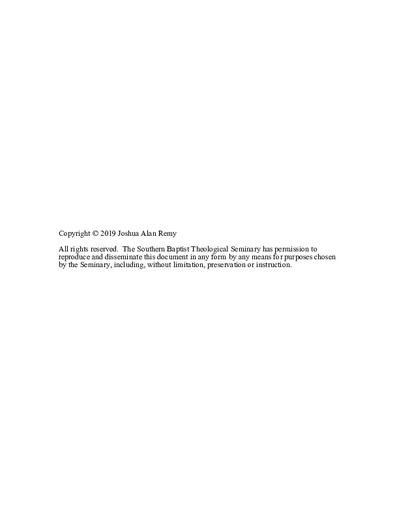Church Transition to Plurality of Elders: A Case Study
Subject
Southern Baptist Convention--GovernmentChurch polity
Elders (Church officers)--Baptists
Christian leadership
Abstract
A desire among evangelical churches in denominations such as the Southern Baptist Convention to return to biblical forms of leadership have led a number of churches to examine what seems to many to be the biblical model of a plurality of elders. Many new Southern Baptist church plants are starting with this type of polity, but some already established churches desire to make a transition in their church government as well. Some of these churches fail at this transition and experience discord. Some succeed and see great fruit. This case study examines one traditional Southern Baptist church’s experience in transitioning from a single elder congregational model to a plurality of elders. The research examines the time before, during, and after the change in polity by surveying members, interviewing specific groups of the congregation, analyzing documents from during the transition, and through the observation of the researcher, who was a guiding participant in the change. Chapter 1 introduces the research problem. Chapter 2 examines the foundation set by the precedent literature in the arguments for and against a plurality of elders along with a literature survey of organizational change focused on the church. Chapter 3 outlines the case study research methodology. Chapters 4 and 5 discuss the findings of the research. The goal of this case study is to provide others with an illustration of best practices and challenges that a church may experience in a transition to plurality of elders and hopefully ease the path of change.

